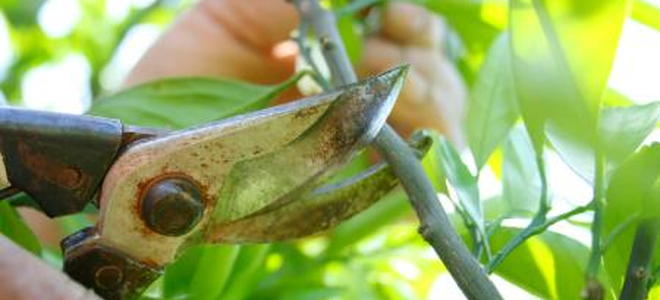
Tree pruning can be a difficult concept for many growers, but proper pruning is essential to proper growth and fruit development. When it comes to pruning, it seems like an arcane a mixture of art and science. When my dad bought his first fruit tree, he tried pruning by himself. His idea was that pruning was more for looks than anything else. He’d take the time to cut them into a nice shape and take off any dead or dying branches. He’d also do it about once a month. He was also doing it all wrong.
Pruning is far more than just a cosmetic treatment for your fruit trees; it’s a necessary part of growing process. Improperly pruned trees can end up overloaded with fruit or bear no fruit at all.
(For more info on growing your trees, look here.)
When Do You Prune?
Any cutting of dead branches and shaping done throughout the year is more akin to cleaning. Pruning is specifically designed to make it easier for the tree to grow and bear fruit. The primary time to prune a tree is at the tail of winter, at the end of the tree’s dormant cycle, or very early in spring. There are no leaves or fruit to bar your way and you have a clear vantage of the branches. There’s nothing worse than trying to cut a tree branch and end up falling off your ladder, cutting through a branch or being hit in the head by falling fruit. (Been there, done that). The other time to prune is during the summer, but that's only to time down trees that are over grown or too big.
Pruning a Young Tree
Young trees need to be pruned heavy. You basically turn small trees back into sticks in the ground. You’ll want to keep any small horizontal branches and get rid of any that are growing more vertically or downward below 90 degrees. Ideally, you want branches that are shooting for 45 to 60 degrees. Of course, any damaged or diseased branches have to go, as well as any small trees sprouting at the base. These are called suckers and compete for nutrients and do nothing for you.
Pruning a Larger Tree
When trees get larger, consider topping and thinning. Be careful of topping versus thinning trees. Topping a tree means cutting the tops of the tree into a snowball or flattop shape. This is drastic, and I always leave this to a professional arborist. If done wrong, topping can severely decrease the foliage of the tree as well as create several new shoots going off in all different directions. Topping is usually only done if the tree is so large that it could cause damage to property or if it is near power lines. Thinning means complete removal of the branches back to the main stem. You can keep the overall shape of the tree and new growth is distributed via numerous areas. You also want to cut off any branches that have turned and are growing towards the tree.
Buds Versus Branches
Trimming buds should be done right where the bud and tree connect. You don’t want to leave any stubs. You want to prune buds and shoots if branches become too overgrown or too heavy with fruit. Remember, each bud will become a small branch. The old way of pruning branches was to do it flush with the trunk of the tree. The problem was this wound allowed organisms to enter and infect the tree. The accepted way now is to prune just outside where the collar is. This creates a circular wound as compared to oval if cut to close to the main trunk.
My dad never did get the hang of pruning, but that’s no reason why you can’t become an expert.







Comments:
Post Your Comment: